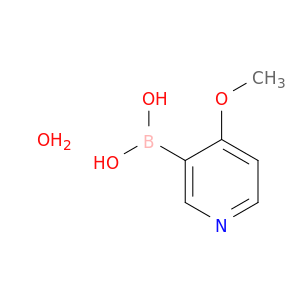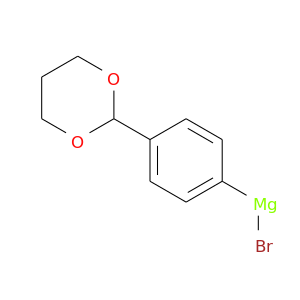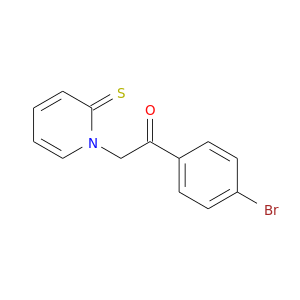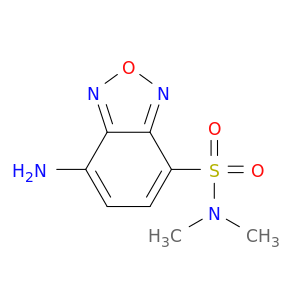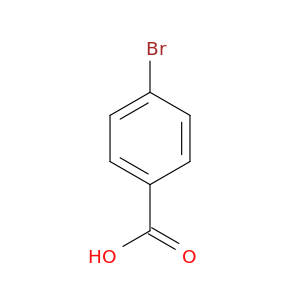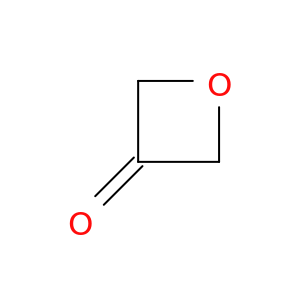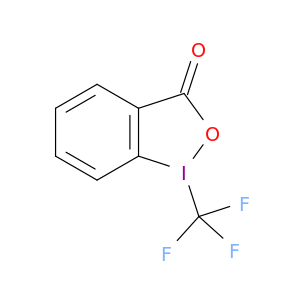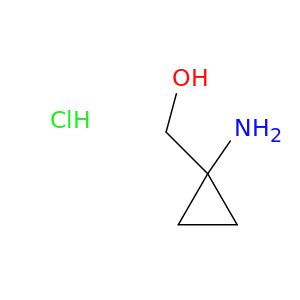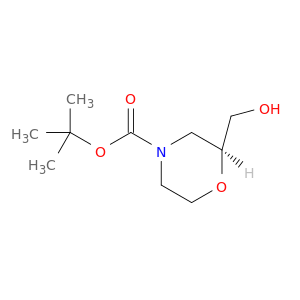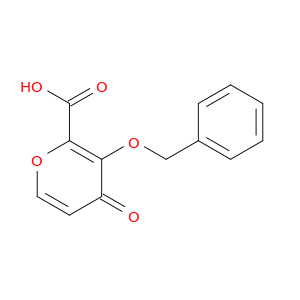200,000+ products from a single source!
sales@angenechem.com
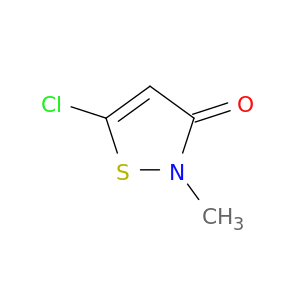
26172-55-4 | 5-Chloro-2-methyl-4-isothiazolin-3-one
CAS No: 26172-55-4 Catalog No: AG00384S MDL No:MFCD00792550
Product Description
Catalog Number:
AG00384S
Chemical Name:
5-Chloro-2-methyl-4-isothiazolin-3-one
CAS Number:
26172-55-4
Molecular Formula:
C4H4ClNOS
Molecular Weight:
149.5987
MDL Number:
MFCD00792550
IUPAC Name:
5-chloro-2-methyl-1,2-thiazol-3-one
InChI:
InChI=1S/C4H4ClNOS/c1-6-4(7)2-3(5)8-6/h2H,1H3
InChI Key:
DHNRXBZYEKSXIM-UHFFFAOYSA-N
SMILES:
Cn1sc(cc1=O)Cl
EC Number:
247-500-7
UNII:
DEL7T5QRPN
Properties
Complexity:
156
Compound Is Canonicalized:
Yes
Covalently-Bonded Unit Count:
1
Defined Atom Stereocenter Count:
0
Defined Bond Stereocenter Count:
0
Exact Mass:
148.97g/mol
Formal Charge:
0
Heavy Atom Count:
8
Hydrogen Bond Acceptor Count:
2
Hydrogen Bond Donor Count:
0
Isotope Atom Count:
0
Molecular Weight:
149.592g/mol
Monoisotopic Mass:
148.97g/mol
Rotatable Bond Count:
0
Topological Polar Surface Area:
45.6A^2
Undefined Atom Stereocenter Count:
0
Undefined Bond Stereocenter Count:
0
XLogP3:
0.9
Literature
| Title | Journal |
|---|---|
| Determination of Protein Haptenation by Chemical Sensitizers Within the Complexity of the Human Skin Proteome. | Toxicological sciences : an official journal of the Society of Toxicology 20180401 |
| SENS-IS, a 3D reconstituted epidermis based model for quantifying chemical sensitization potency: Reproducibility and predictivity results from an inter-laboratory study. | Toxicology in vitro : an international journal published in association with BIBRA 20160401 |
| Chemical allergens stimulate human epidermal keratinocytes to produce lymphangiogenic vascular endothelial growth factor. | Toxicology and applied pharmacology 20150301 |
| Multicenter study of preservative sensitivity in patients with suspected cosmetic contact dermatitis in Korea. | The Journal of dermatology 20120801 |
| B cell increases and ex vivo IL-2 production as secondary endpoints for the detection of sensitizers in non-radioisotopic local lymph node assay using flow cytometry. | Toxicology letters 20120325 |
| Effects of 5-chloro-2-methyl-4-isothiazolin-3-one and other candidate biodiesel biocides on rat alveolar macrophages and NR8383 cells. | Archives of toxicology 20111101 |
| Non-fragrance allergens in specific cosmetic products. | Contact dermatitis 20111101 |
| Patch testing in children with hand eczema. A 5-year multicentre study in Spain. | Contact dermatitis 20111001 |
| [Current contact allergens]. | Der Hautarzt; Zeitschrift fur Dermatologie, Venerologie, und verwandte Gebiete 20111001 |
| Can exposure limitations for well-known contact allergens be simplified? An analysis of dose-response patch test data. | Contact dermatitis 20110601 |
| Danger from the workplace: allergic contact dermatitis from the first exposure to isothiazolinones. | Contact dermatitis 20110601 |
| The intra- and inter-laboratory reproducibility and predictivity of the KeratinoSens assay to predict skin sensitizers in vitro: results of a ring-study in five laboratories. | Toxicology in vitro : an international journal published in association with BIBRA 20110401 |
| [Sensitization to methylchloroisothiazolinone-methylisothiazolinone after a burn caused by massive accidental occupational exposure]. | Actas dermo-sifiliograficas 20110401 |
| Contact sensitization to methylisothiazolinone in Finland--a multicentre study. | Contact dermatitis 20110101 |
| Susceptibility of Mycobacterium immunogenum and Pseudomonas fluorescens to formaldehyde and non-formaldehyde biocides in semi-synthetic metalworking fluids. | International journal of molecular sciences 20110101 |
| Analysis of isothiazolinone biocides in paper for food packaging by ultra-high-performance liquid chromatography-tandem mass spectrometry. | Food additives & contaminants. Part A, Chemistry, analysis, control, exposure & risk assessment 20101201 |
| Prediction of the contact sensitizing potential of chemicals using analysis of gene expression changes in human THP-1 monocytes. | Toxicology letters 20101110 |
| A new in vitro method for identifying chemical sensitizers combining peptide binding with ARE/EpRE-mediated gene expression in human skin cells. | Cutaneous and ocular toxicology 20100901 |
| Prevalence and cause of methylisothiazolinone contact allergy. | Contact dermatitis 20100901 |
| Methylisothiazolinone, an emerging allergen in cosmetics? | Contact dermatitis 20100801 |
| Methylchloroisothiazolinone / methylisothiazolinone and moist wipe dermatitis. | Dermatology online journal 20100515 |
| Consumer exposure to biocides--identification of relevant sources and evaluation of possible health effects. | Environmental health : a global access science source 20100101 |
| Concomitant contact allergy to methylchloroisothiazolinone/methylisothiazolinone and formaldehyde-releasing preservatives. | Contact dermatitis 20100101 |
| Identifying the optimal patch test concentration for methylchloroisothiazolinone and methylisothiazolinone. | Contact dermatitis 20090501 |
| Expression of surface markers on the human monocytic leukaemia cell line, THP-1, as indicators for the sensitizing potential of chemicals. | Contact dermatitis 20090401 |
| Mechanistic assessment of peptide reactivity assay to predict skin allergens with Kathon CG isothiazolinones. | Toxicology in vitro : an international journal published in association with BIBRA 20090401 |
| Role of intracellular calcium and S-glutathionylation in cell death induced by a mixture of isothiazolinones in HL60 cells. | Biochimica et biophysica acta 20090301 |
| Methyl gallate. | Acta crystallographica. Section E, Structure reports online 20090201 |
| Shampoos. | Dermatitis : contact, atopic, occupational, drug 20090101 |
| Alkalization of wall paint prevents airborne contact dermatitis in patients with sensitization to isothiazolinones. | Contact dermatitis 20080801 |
| Suitability of macrophage inflammatory protein-1beta production by THP-1 cells in differentiating skin sensitizers from irritant chemicals. | Contact dermatitis 20080401 |
| Airborne allergic contact dermatitis to methylchloroisothiazolinone/methylisothiazolinone in ironing water. | Contact dermatitis 20080301 |
| Cross-reactivity between methylchloroisothiazolinone/methylisothiazolinone, methylisothiazolinone, and other isothiazolinones in workers at a plant producing binders for paints and glues. | Contact dermatitis 20080101 |
| Different regulation of T helper 1- and T helper 2-promoting cytokine signalling factors in human dendritic cells after exposure to protein versus contact allergens. | Immunology 20080101 |
| Quantitative relationships between patch test reactivity and use test reactivity: an overview. | Cutaneous and ocular toxicology 20080101 |
| Analysis of isothiazolinones in environmental waters by gas chromatography-mass spectrometry. | Journal of chromatography. A 20070914 |
| 'Dermatologically tested' baby toilet tissues: a cause of allergic contact dermatitis in adults. | Contact dermatitis 20070801 |
| Iron dependent degradation of an isothiazolone biocide (5-chloro-2-methyl-4-isothiazolin-3-one). | Biofouling 20070101 |
| Preservatives sensitivity in Israel: a 10-year overview (1995-2004). | Contact dermatitis 20061001 |
| An evaluation of dose/unit area and time as key factors influencing the elicitation capacity of methylchloroisothiazolinone/methylisothiazolinone (MCI/MI) in MCI/MI-allergic patients. | Contact dermatitis 20060901 |
| Contact dermatitis from methylisothiazolinone in a paint factory. | Contact dermatitis 20060601 |
| GSH depletion, protein S-glutathionylation and mitochondrial transmembrane potential hyperpolarization are early events in initiation of cell death induced by a mixture of isothiazolinones in HL60 cells. | Biochimica et biophysica acta 20060201 |
| Patch testing with patients' own cosmetics and toiletries--results of the IVDK*, 1998-2002. | Contact dermatitis 20051001 |
| Occupational contact dermatitis to 1,2-benzisothiazolin-3-one and 5-chloro-2-methylisothiazolin-3-one/2-methylisothiazolin-3-one in paint manufacturers. | Contact dermatitis 20050801 |
| Oxidative stress in mouse skin following application of contact allergenic 5-chloro-2-methyl-4-isothiazolin-3-one and oxazolone. | Contact dermatitis 20050301 |
| From experiment to theory: molecular orbital parameters to interpret the skin sensitization potential of 5-chloro-2-methylisothiazol-3-one and 2-methylisothiazol-3-one. | Chemical research in toxicology 20050201 |
| Effect of glutathione on the covalent binding of the 13C-labeled skin sensitizer 5-chloro-2-methylisothiazol-3-one to human serum albumin: identification of adducts by nuclear magnetic resonance, matrix-assisted laser desorption/ionization mass spectrometry, and nanoelectrospray tandem mass spectrometry. | Chemical research in toxicology 20040901 |
| Covalent binding of the 13C-labeled skin sensitizers 5-chloro-2-methylisothiazol-3-one (MCI) and 2-methylisothiazol-3-one (MI) to a model peptide and glutathione. | Bioorganic & medicinal chemistry letters 20040119 |
| Contact sensitization to 5-chloro-2-methyl-4-isothiazolin-3-one and 2-methyl-4-isothiazolin-3-one in children. | Contact dermatitis 20031001 |
| Co-existing sensitivity to metronidazole and isothiazolinone. | Clinical and experimental dermatology 20030901 |
| Involvement of oxidative stress in apoptosis induced by a mixture of isothiazolinones in normal human keratinocytes. | The Journal of investigative dermatology 20030801 |
| Studies of chemical selectivity of hapten, reactivity, and skin sensitization potency. 3. Synthesis and studies on the reactivity toward model nucleophiles of the 13C-labeled skin sensitizers, 5-chloro-2-methylisothiazol-3-one (MCI) and 2-methylisothiazol-3-one (MI). | Chemical research in toxicology 20030501 |
| Coupling of contact sensitizers to thiol groups is a key event for the activation of monocytes and monocyte-derived dendritic cells. | The Journal of investigative dermatology 20030201 |
| Audit of Finn Chamber patch test preparation. | Contact dermatitis 20021201 |
| Elucidating changes in surface marker expression of dendritic cells following chemical allergen treatment. | Toxicology and applied pharmacology 20020801 |
| Monitoring levels of preservative sensitivity in Europe. A 10-year overview (1991-2000). | Contact dermatitis 20020401 |
| In vitro induction of apoptosis vs. necrosis by widely used preservatives: 2-phenoxyethanol, a mixture of isothiazolinones, imidazolidinyl urea and 1,2-pentanediol. | Biochemical pharmacology 20020201 |
| Occupational allergic contact dermatitis from methylchloroisothiazolinone and methylisothiazolinone (MCI/MI) in a silicone-emulsion lock lubricant. | Contact dermatitis 20010401 |
Related Products
Featured Products
© 2019 Angene International Limited. All rights Reserved.


